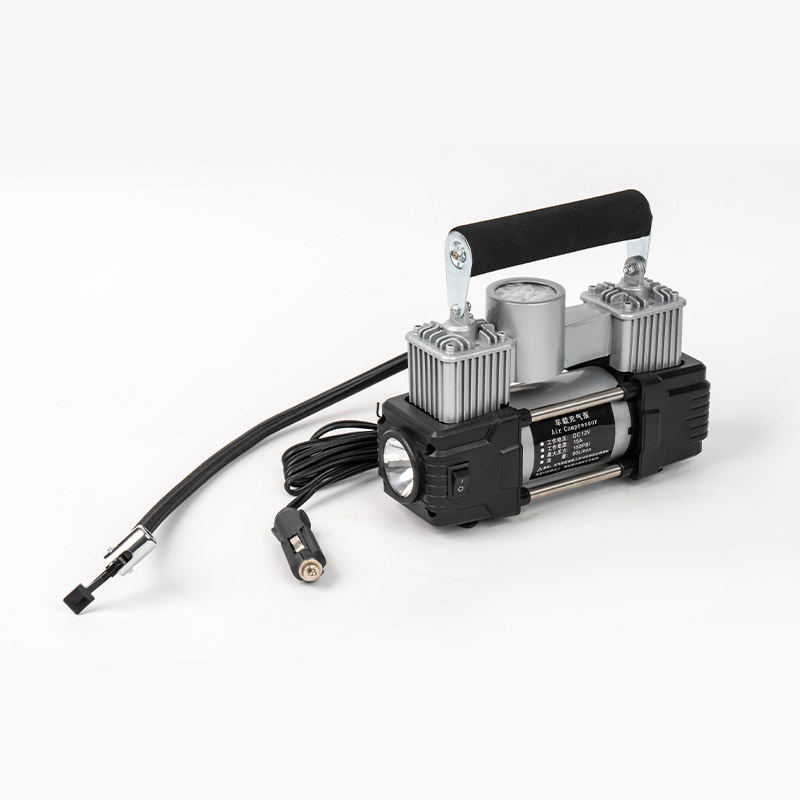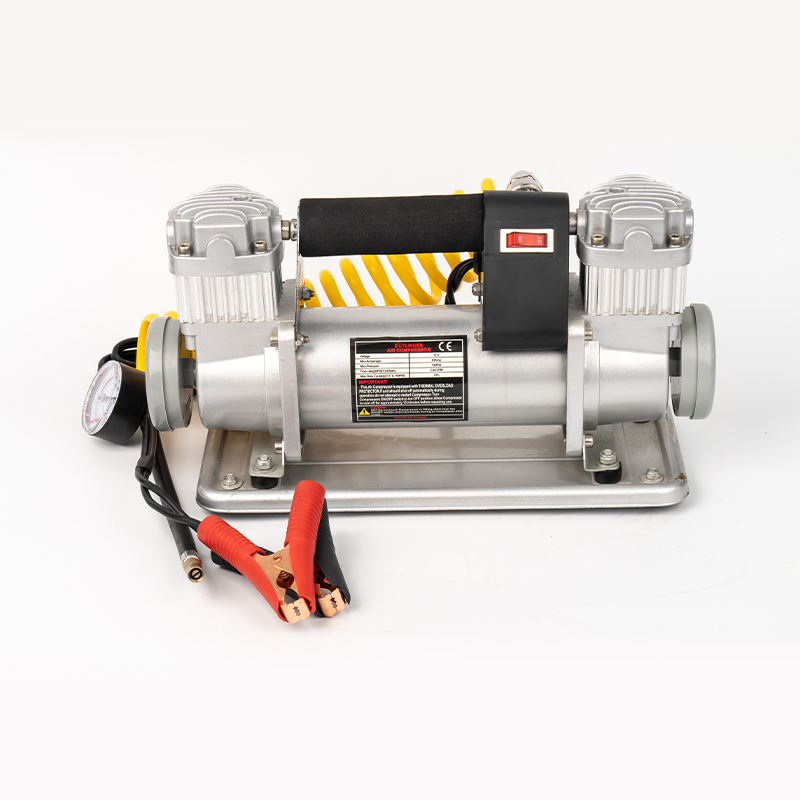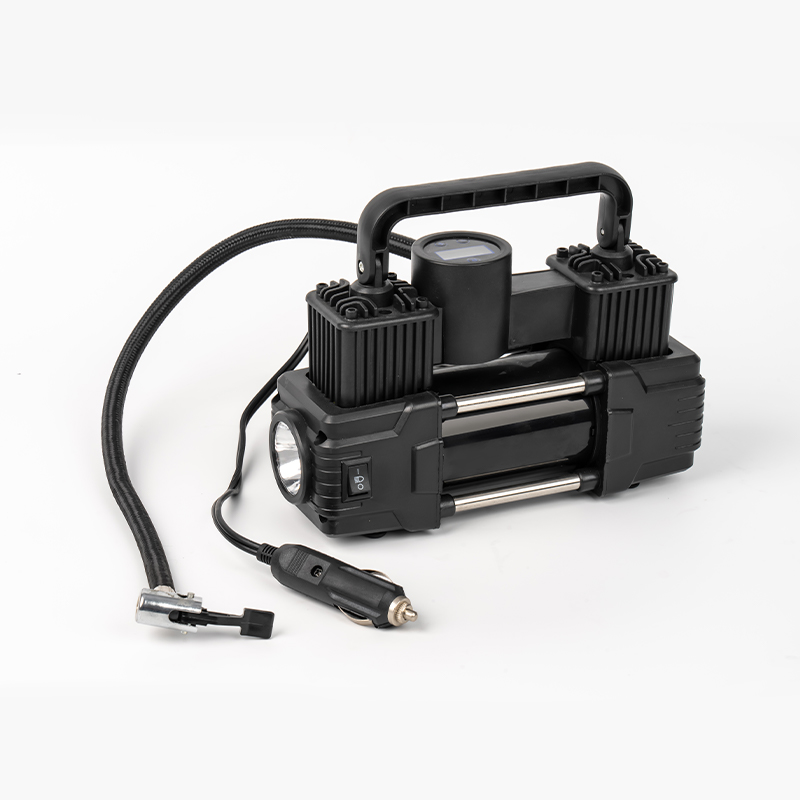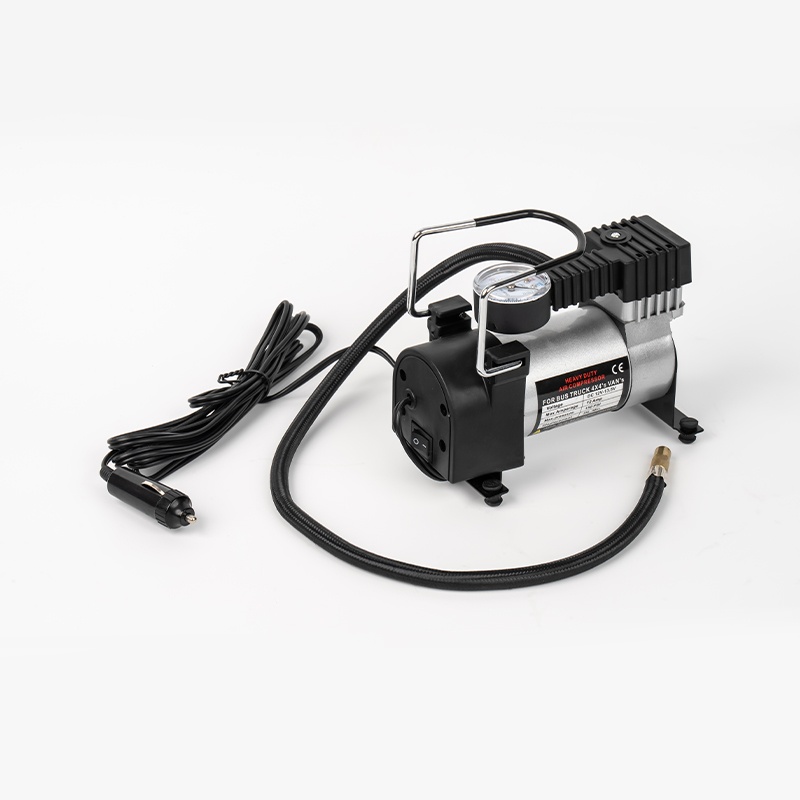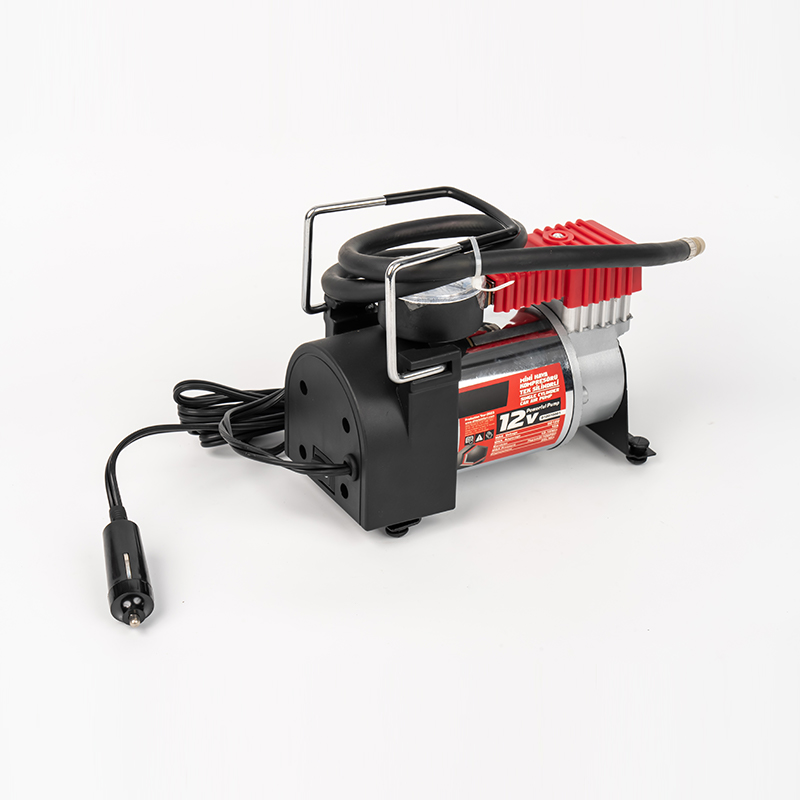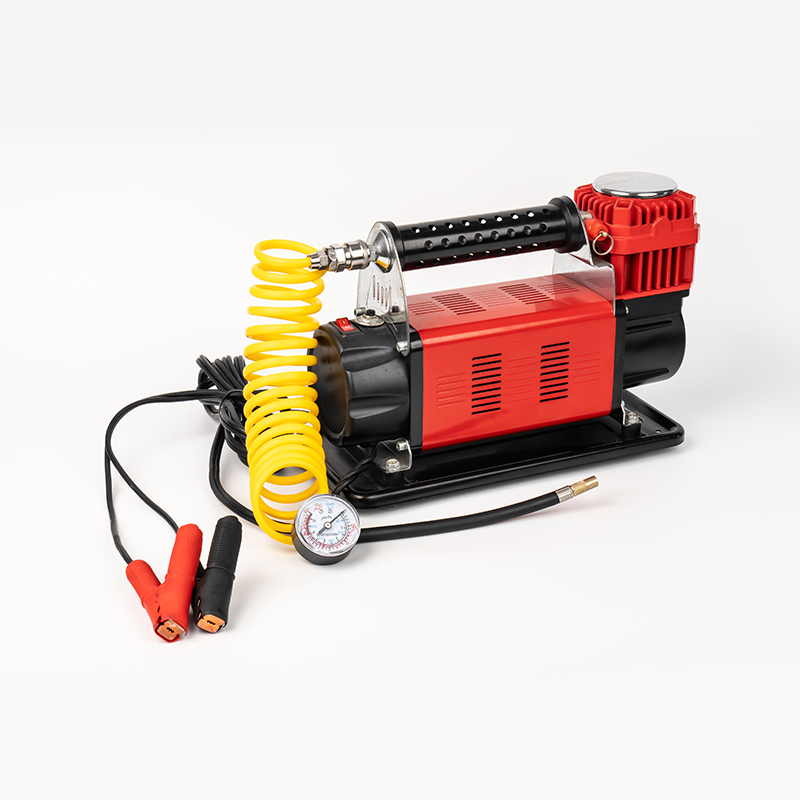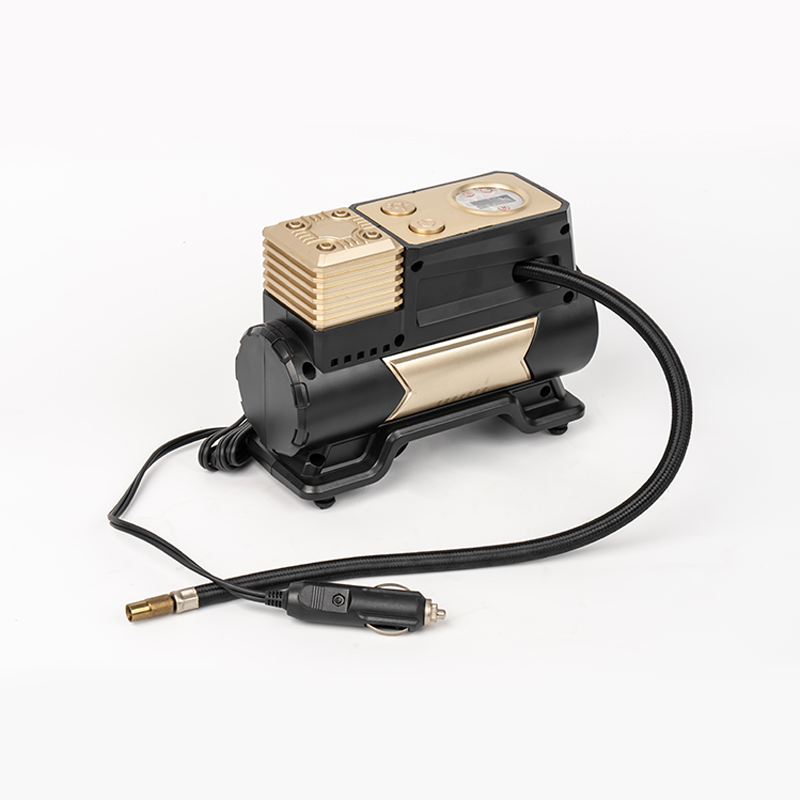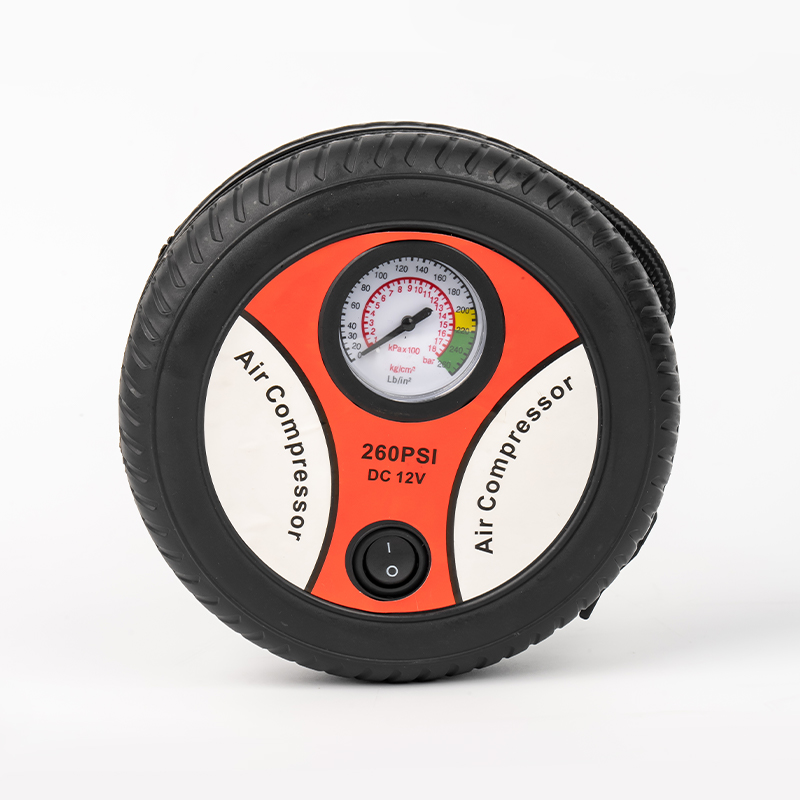Car tire air pumps, often called car air pumps, portable air pumps or tire inflators, are portable air pressure supply devices designed specifically for car tires. It can quickly and conveniently inflate tires to the manufacturer's recommended tire pressure (usually in PSI, Bar or kPa), and is an ideal tool for dealing with insufficient tire pressure, slow air loss or seasonal tire pressure adjustment. Its core value lies in improving driving safety, extending tire life, optimizing fuel economy and enhancing driving convenience.
1. Core functions and core values
Precise inflation and tire pressure maintenance:
The core task is to quickly replenish tire pressure to the target value.
Preset tire pressure filling and stopping function: Modern smart air pumps allow users to preset the required tire pressure value. The built-in pressure sensor of the device will automatically stop inflation after reaching the target value, completely avoiding the risk of overfilling.
Real-time tire pressure monitoring: The equipped digital or mechanical pressure gauge can instantly display the current tire pressure, allowing users to accurately grasp the inflation progress.
Driving safety assurance (core value):
Preventing accidents: Maintaining correct tire pressure is the basis of driving safety. Insufficient tire pressure will significantly increase the risk of tire blowout (according to NHTSA data, insufficient tire pressure is the main cause of a large number of tire blowout accidents) and seriously affect the vehicle's handling performance (heavy steering, extended braking distance, and reduced cornering stability).
Dealing with emergencies: When a puncture occurs during driving and the tire slowly loses air, the air pump can quickly add air to help users reach the repair point safely.
Tire and vehicle protection:
Extending tire life: Correct tire pressure ensures that the tire contact area is uniform, prevents abnormal wear of the tire shoulder or crown, and greatly extends the service life of the tire.
Optimizing fuel economy: Insufficient tire pressure increases rolling resistance and increases fuel consumption. Maintaining standard tire pressure can save fuel (EPA estimates that maintaining appropriate tire pressure can improve fuel efficiency by about 0.6% to 3%).
Emergency tire repair (some models):
Some air pumps have an integrated "emergency tire repair" function and come with a tire repair tank. In case of a minor puncture, the tire repair fluid can be injected into the tire first, and then inflated to form a temporary seal, which buys time for the owner to go to a professional repair shop.
Extended applications:
The inflation needs of bicycles, motorcycles, balls, inflatable mattresses, rubber boats, etc. can also be easily met (note the interface adaptation).
2. Structure and working principle
Power core:
Motor drive: DC motor (commonly driven by 12V or lithium battery) is the mainstream power source.
Cylinder and piston/diaphragm:
Piston type: The motor drives the piston to reciprocate in the cylinder. When inhaling, the piston moves downward and the intake valve opens. When compressing, the piston moves upward and the exhaust valve opens to output high-pressure gas. The structure is sturdy and durable, suitable for continuous high-pressure work.
Diaphragm type: The motor drives the diaphragm to vibrate at high speed, and the gas compression is achieved through the change of cavity volume. It is usually lighter and quieter, but the continuous high-pressure performance is slightly inferior to the piston type.
Air pressure transmission path:
Inhaled air → filtration device (some models have) → compression chamber (cylinder/diaphragm chamber) → high-pressure gas output pipe → inflation hose → valve nozzle connector.
Cooling system:
The motor and compression components will accumulate a lot of heat during inflation. High-quality air pumps are equipped with metal heat sinks or cooling fans to ensure the stability and durability of the equipment under long-term operation.
Control and display unit:
Pressure gauge: mechanical (Bourdon tube type) or more accurate digital LCD display.
Control panel: switch button, mode selection key (such as unit switching PSI/Bar/kPa), preset tire pressure button, LCD screen, etc.
Pressure sensor and automatic shutdown circuit (smart model): real-time monitoring of output air pressure, and power off when reaching the preset value.
Connection and sealing:
Inflation hose: pressure-resistant rubber or braided hose, the length affects the convenience of operation.
Valve nozzle connector:
Pressure nozzle (popular type): the valve core cap needs to be unscrewed and pressed to lock.
American gas nozzle: Commonly found on some trucks and motorcycles, usually threaded and tightened.
Smart connector: Some products are equipped with a "press to lock" or "tighten to pass" design to simplify operation.
Power supply solution:
Cigarette lighter power supply (12V DC): The most mainstream method, ready for use with the car. Pay attention to the cigarette lighter circuit carrying capacity (usually 10-15A).
Direct clamping of the vehicle battery (alligator clip): Suitable for emergency use when the cigarette lighter fuse is blown.
Built-in lithium-ion battery (lithium battery pump): Get rid of the constraints of cables, truly portable, suitable for power-free environments (such as camping, outdoor rescue). Pay attention to battery capacity (mAh), voltage, charging method and endurance (number of tires that can be fully charged at a time).
Household alternating current (AC): Supported by some large or household models.
3. Key performance parameters and purchase considerations
Working air pressure range:
Covering common vehicle requirements (sedans/SUVs: about 30-50 PSI; light trucks/some off-road vehicles: may require 60-100 PSI).
Maximum pressure: reflects the highest air pressure value that the device can reach (commonly 150PSI and above).
Inflation flow/speed:
Usually in L/Min (liters/minute), CFM cubic feet per minute.
The higher the value, the faster the inflation speed (for example, the time required to charge from 0 PSI to 35 PSI).
Influencing factors: motor power, cylinder design, heat dissipation efficiency.
Power:
Directly affects the inflation speed and maximum pressure. Common ranges range from small pumps of about 100W to professional models of 300W or even higher power.
Cigarette lighter pumps need to pay attention to the current (A) limit (power W = voltage V x current A).
Heat dissipation and continuous working time:
Metal cylinders, heat sinks, and fan configurations are the key to ensuring long-term operation.
The ability to work continuously directly affects the efficiency of inflating multiple tires or large tires (check the "work/rest cycle" marked in the manual).
Noise level:
It is inevitable (motor + pneumatic noise), but it varies significantly from product to product. Diaphragm pumps are usually quieter (about 70-80 decibels), and some high-end models will use noise reduction design.
Accuracy and reliability:
The accuracy of the pressure gauge (especially digital) is crucial (±1-2% accuracy is common).
Whether the automatic shutdown function is sensitive and reliable.
Portability and accessories:
Size and weight: Lithium battery pumps are the lightest.
Storage design: Whether hoses and power cords are easy to organize.
Accessories: Different nozzle adapters, storage bags, tire sealant (if any), spare fuses, lighting, etc.
Safety certification:
It is more secure to choose products that have passed safety certifications such as UL, CE, FCC, RoHS, etc.
4. Application scenarios
Daily tire pressure maintenance: Regularly (recommended monthly) check and replenish tire pressure to the standard value marked on the door frame or manual.
Seasonal tire pressure adjustment: Actively adjust tire pressure when the temperature rises or falls significantly (thermal expansion and contraction).
Dealing with slow air leakage/minor punctures: Temporary air filling or emergency treatment with tire repair fluid (only for minor punctures).
Essential for long-distance travel/self-driving tours: Dealing with tire pressure problems in remote areas.
Rescue and emergency: Help yourself or others out of trouble.
After the vehicle is parked for a long time: The tire pressure may drop after parking, and it needs to be checked and replenished before using the vehicle.
5. Purchasing Guide
Clear requirements:
Mainly for sedans/SUVs? Or do you need to deal with the high pressure requirements of large tires of trucks/off-road vehicles?
Is there an external power supply for common scenarios? Do you need extreme portability (lithium battery pump)?
Do you value the emergency tire repair function?
Focus on core performance:
Sufficient air pressure and flow: Make sure that the maximum tire pressure requirements of your vehicle can be met. The larger the flow, the better the user experience (especially for large tires).
Automatic shutdown and precision: This is the key to peace of mind and safety.
Heat dissipation and durability: Products with metal cylinders and good heat dissipation design have a longer life.
Power supply selection:
Lithium battery pump is the first choice for convenience (but battery life and charging need to be considered).
Cigarette lighter pump is the safest and most reliable choice (make sure the power does not exceed the load of the cigarette lighter circuit).
AC/DC dual-mode models can be considered for occasional home use or high requirements.
Brand and reputation:
Choosing well-known brands (such as Michelin, Pirelli, Goodyear, 70mai, BASEUS, Yantu, Yantu, Tiejiangjun, etc.) usually means better quality, after-sales and safety guarantees.
Detailed experience:
Hose length and ease of use of connectors: Is the operation smooth?
Pressure gauge clarity: especially when the light is poor.
Lighting: very practical for use at night or in the garage.
Storage convenience: does it save trunk space?

 English
English Español
Español عربى
عربى Türk
Türk
